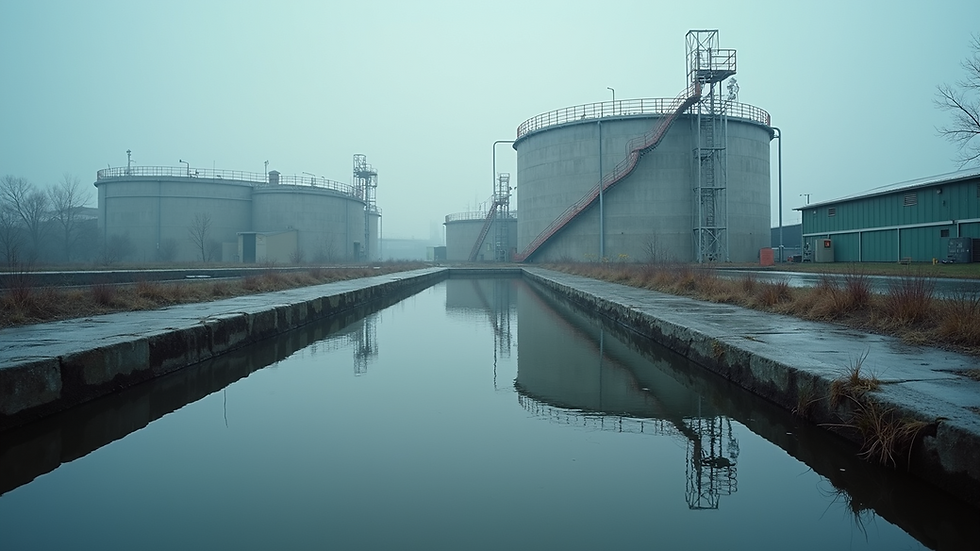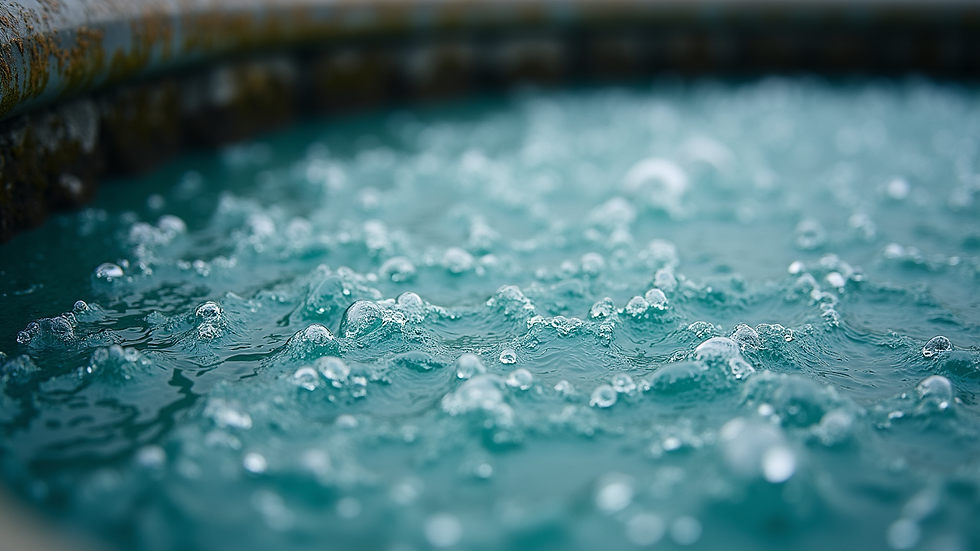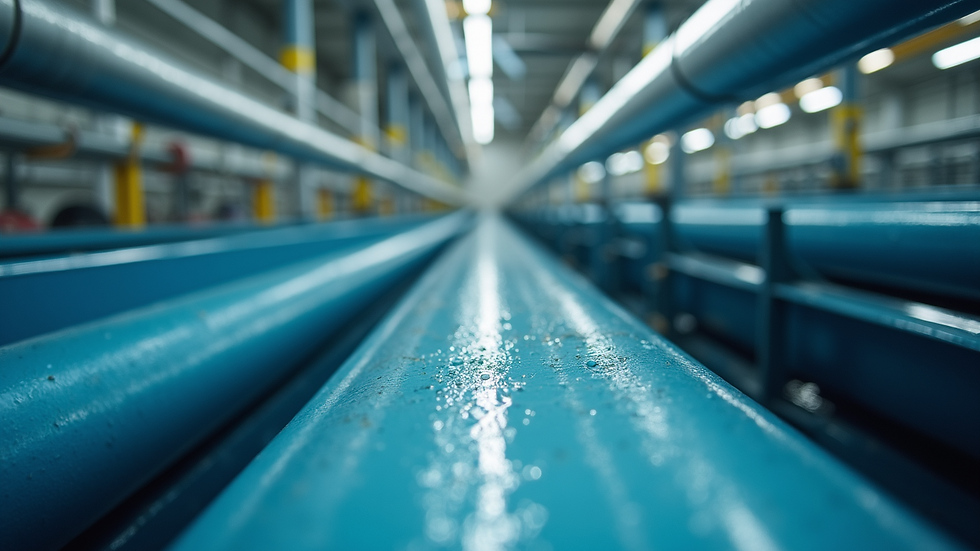Proven Techniques for Industrial Effluent Treatment
- palwinder kaur
- Aug 30
- 4 min read
Industrial effluent treatment is a critical process for protecting the environment and ensuring compliance with regulations. Industries generate wastewater containing harmful pollutants that must be treated before discharge or reuse. Effective treatment techniques help reduce environmental impact, conserve water, and promote sustainable industrial practices. This article explores proven methods for industrial effluent treatment, providing practical insights and actionable recommendations.
Understanding Industrial Effluent Treatment
Industrial effluent refers to wastewater produced by manufacturing and industrial processes. This wastewater often contains chemicals, heavy metals, organic matter, and suspended solids that can harm ecosystems if released untreated. Treating this effluent involves physical, chemical, and biological processes to remove contaminants and make the water safe for discharge or reuse.
The choice of treatment method depends on the type of industry, the nature of pollutants, and regulatory requirements. Common industries generating effluent include textiles, pharmaceuticals, food processing, and chemical manufacturing. Each industry requires tailored treatment solutions to address specific contaminants.

Key Industrial Effluent Treatment Techniques
Several techniques have proven effective in treating industrial effluent. These methods can be combined or used individually depending on the effluent characteristics.
1. Physical Treatment Methods
Physical treatment involves removing solids and suspended particles from wastewater. Common physical methods include:
Screening: Removes large debris and solids using screens or grids.
Sedimentation: Allows suspended solids to settle by gravity in sedimentation tanks.
Filtration: Uses sand filters or membrane filters to remove fine particles.
These methods are often the first step in treatment, preparing the effluent for further chemical or biological processes.
2. Chemical Treatment Methods
Chemical treatment uses reagents to neutralize or precipitate contaminants. Key chemical techniques include:
Coagulation and Flocculation: Chemicals like alum or ferric chloride are added to aggregate fine particles into larger flocs that settle easily.
Neutralization: Adjusts pH levels using acids or bases to make the effluent less corrosive.
Oxidation: Uses oxidizing agents such as chlorine or ozone to break down organic pollutants.
Chemical treatment is essential for industries discharging acidic or alkaline wastewater or containing toxic substances.
3. Biological Treatment Methods
Biological treatment leverages microorganisms to degrade organic pollutants. This method is widely used due to its cost-effectiveness and environmental friendliness. Common biological processes include:
Activated Sludge Process: Aerobic bacteria consume organic matter in aeration tanks.
Trickling Filters: Wastewater passes over a bed of media colonized by bacteria that break down pollutants.
Anaerobic Digestion: Microorganisms degrade organic matter in the absence of oxygen, producing biogas as a byproduct.
Biological treatment is particularly effective for food processing and pharmaceutical effluents rich in organic content.

What is the industrial wastewater treatment?
Industrial wastewater treatment is the process of removing contaminants from water used in industrial activities. This treatment ensures that the water released into the environment meets safety standards and does not harm ecosystems or human health. The treatment process typically involves multiple stages:
Preliminary Treatment: Removal of large solids and grit.
Primary Treatment: Sedimentation to remove suspended solids.
Secondary Treatment: Biological processes to degrade organic matter.
Tertiary Treatment: Advanced methods like filtration, disinfection, or nutrient removal.
Each stage targets specific pollutants, making the effluent cleaner and safer for discharge or reuse. Industries must design treatment systems based on the effluent's chemical and physical properties to achieve optimal results.
Advanced Technologies in Industrial Effluent Treatment
Modern industries are adopting advanced technologies to improve treatment efficiency and reduce environmental impact. Some of these innovations include:
Membrane Filtration
Membrane technologies such as ultrafiltration, nanofiltration, and reverse osmosis provide high-quality effluent by removing dissolved solids, bacteria, and viruses. These systems are compact and can be integrated into existing treatment plants.
Electrochemical Treatment
Electrochemical methods use electric current to remove pollutants through oxidation or reduction reactions. This technique is effective for treating heavy metals and refractory organic compounds.
Constructed Wetlands
Constructed wetlands mimic natural wetlands to treat wastewater biologically. They are cost-effective and sustainable, using plants and microorganisms to remove nutrients and organic matter.
Zero Liquid Discharge (ZLD)
ZLD systems aim to eliminate liquid waste by recovering and recycling all water from effluent. This approach is gaining popularity in water-scarce regions and industries with strict discharge regulations.

Best Practices for Effective Industrial Effluent Treatment
To maximize the effectiveness of effluent treatment, industries should follow these best practices:
Regular Monitoring: Continuously test effluent quality to ensure compliance and optimize treatment processes.
Customized Treatment Design: Tailor treatment systems to the specific characteristics of the effluent.
Operator Training: Ensure staff are well-trained in operating and maintaining treatment equipment.
Waste Minimization: Implement process improvements to reduce pollutant generation at the source.
Proper Sludge Management: Safely handle and dispose of sludge generated during treatment.
Implementing these practices helps industries maintain efficient treatment systems, reduce costs, and protect the environment.
Enhancing Sustainability with Industrial Wastewater Management
Effective industrial wastewater management is essential for sustainable industrial operations. By adopting proven treatment techniques and best practices, industries can minimize their environmental footprint and comply with regulations. Investing in advanced technologies and continuous improvement ensures cleaner water discharge and supports long-term resource conservation.
Industries should also explore opportunities for water reuse and recovery, turning treated effluent into a valuable resource. This approach not only reduces freshwater consumption but also lowers operational costs.
Industrial effluent treatment is a complex but vital process for environmental protection and sustainable industry growth. By understanding and applying proven techniques, industries can achieve efficient wastewater treatment, regulatory compliance, and resource conservation. Continuous innovation and commitment to best practices will drive the future of industrial wastewater management.



Comments